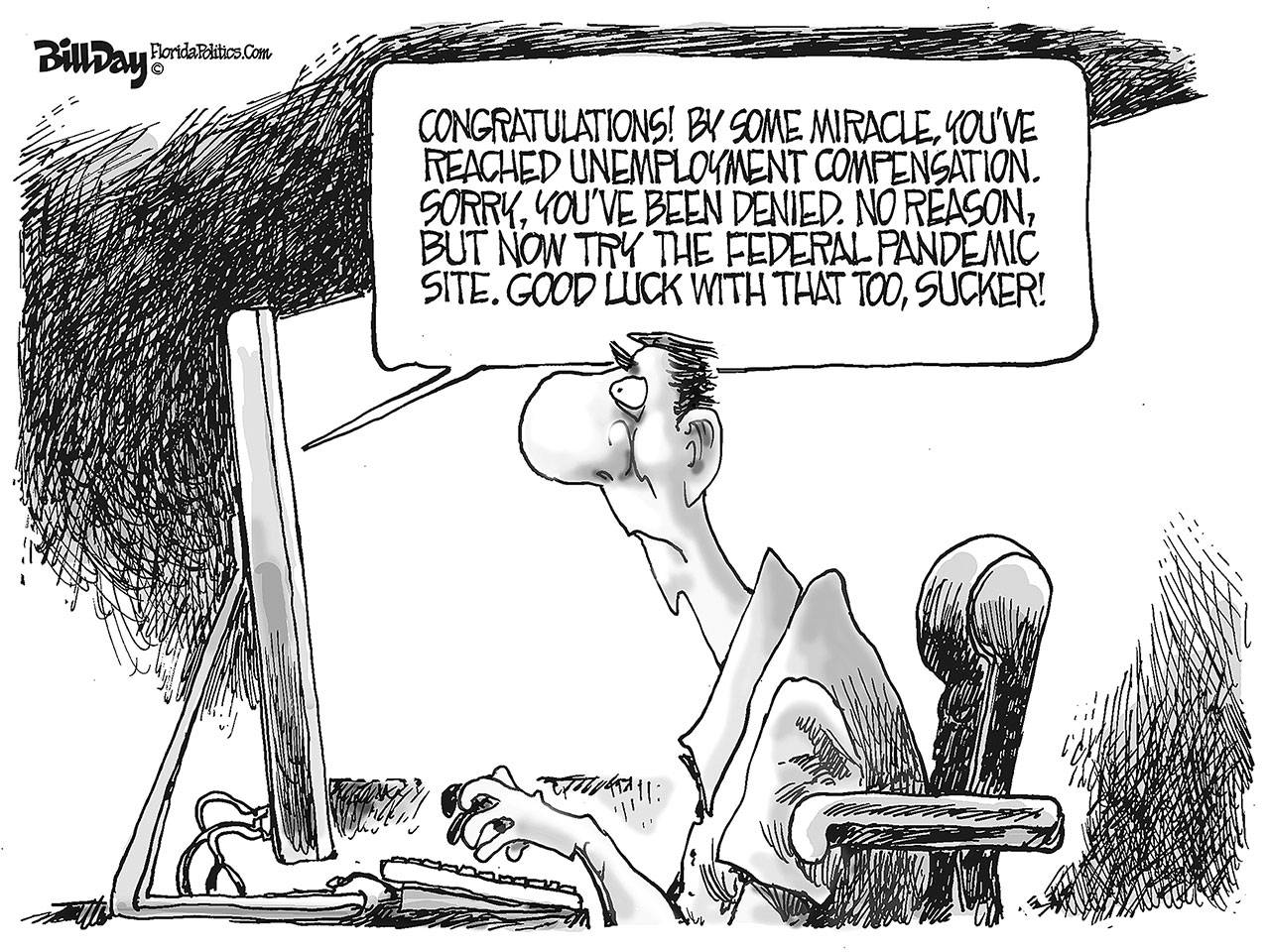By Jon Healey
Los Angeles Times
A complaint circulating among business owners is that they’re having trouble restarting because the workers they laid off during the pandemic aren’t willing to come off of unemployment.
The blame, they say, lies with the $2.2-trillion Coronavirus Aid, Relief, and Economic Security Act that Congress passed in late March, which increased unemployment benefits by $600 per week until July 31 (a date that once seemed like a reasonable approximation of the end of the crisis —sigh). The equivalent of an extra $15 per hour, the extra money has made it more lucrative for low-wage workers to be on the dole than on the job.
Many Republican lawmakers and President Donald Trump are certainly persuaded; Sen. Lindsey Graham (R-S.C.), an often reliable weathervane for GOP pique, said the extra benefit would be extended “over our dead bodies.” (The Hill noted Friday, however, that the sentiment is not unanimous among Graham’s colleagues.) Meanwhile, Treasury Secretary Steven Mnuchin has said flatly that unemployed workers would lose their benefits if they refused to be rehired.
It’s undeniable that the federal bonus gives minimum-wage workers in every state more than they made before they were laid off. In fact, in all but a dozen high-wage states (including California), the bonus raises unemployment benefits high enough to equal or exceed the average worker’s pay. Meanwhile, studies show that the pandemic-related job losses have been concentrated in low-paying service and retail industries.
At this point, there doesn’t appear to be any way to quantify how large a problem this is for employers who are trying to rehire. All we have are anecdotes, albeit plenty of them, making it easy to get mad at the supposed goldbrickers undermining small businesses and holding back our economy.
But there’s also plenty of misinformation that needs to be dispelled, and anger that’s misdirected.
For starters, states don’t allow laid-off workers to just keep collecting unemployment benefits after their employer asks them to come back. There must be special circumstances for them to refuse a job offer and retain unemployment benefits. So to the extent that laid-off workers are holding out and preventing their employers from restarting, it’s either because the mechanisms for enforcing that requirement aren’t working or because special circumstances are the problem.
And regardless of what Mnuchin says, the federal government can’t flick a switch on unemployment benefit eligibility. According to Glenn Spencer, senior vice president of the U.S. Chamber of Commerce’s employment policy division, the Department of Labor signs off on state unemployment insurance plans once a year to make sure they are in compliance with federal law. Then it’s up to states to implement and enforce them.
Mnuchin appears to believe the problem is in enforcement. He has called for businesses that receive forgivable Paycheck Protection Program loans to alert state unemployment agencies about laid-off workers who won’t come back to their jobs. The underlying assumption seems to be that the country is rife with people willing to commit unemployment insurance fraud.
The fundamental issue here is whether more people will go back to work if unemployment benefits are cut back to normal, where they range from $213 per week in Alabama to $555 in Massachusetts (the national average is $378). That’s roughly 40% of the median wage.
You could argue that the incentive to work would be dramatically higher, but that would matter only if jobs were plentiful and the barriers to work (such as a lack of child care) were few. And when the economy is in a deep hole, as it is today, sharply reduced unemployment benefits for tens of millions of unemployed Americans mean less spending, less demand and less economic activity.
That’s one thing opponents of the added benefits seem to be forgetting. Lawmakers didn’t toss in the extra $600 a week because they wanted to make life cushy for laid-off low-wage workers. They did it to try to keep the economy going in spite of the collapse in demand.
That extra money won’t get stuffed into a mattress; it will buy food and clothes, pay bills, cover health insurance deductibles and otherwise flow into and through the economy. And considering that millions of the recipients are in low-wage industries, the recipients are more likely to spend the money quickly and fully than the middle-income families that received $2,400 or more in stimulus checks from the CARES Act.
There’s no doubt that some people who’ve been laid off will try to game the system, especially if they were in dead-end jobs they hated. But it’s a mistake to assume that goldbrickers abound and that the only thing standing between us and a vibrant economy is the disincentive posed by the extra $600 in weekly unemployment benefits.
The bigger challenge for us at the moment — and for months to come — is generating the demand for goods and services that will enable businesses not just to reopen, but to stay open and get back to full capacity.
The stay-at-home orders were well intended, but they have suffocated the economy. Laid-off workers are among the victims, not the villains. And as long as unemployment is at panic levels, the federal government can’t afford to take its foot off the gas.
Jon Healey is the Los Angeles Times’ deputy editorial page editor.



